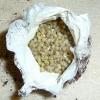Mike's Basic Tarantula
A Basic Site for the Tarantula enthusiast
 | ||||||
 | ||||||
Breeding Tarantulas
That being said, I believe that captive breeding is essential for the survival of some species of tarantulas. To breed tarantulas in captivity is to ensure the survival of the species, to prevent over collecting of wild caught species, and to bring down the prices of some of the more expensive tarantulas in the hobby, thus making them more affordable for the casual tarantula enthusiast. Ninety-eight percent 98% of my tarantulas were captive born (CB), and was purchased as spiderlings. I don't recommend buying wild caught tarantulas for several reasons: they normally comes with problems such as stress, parasites and often diseases; not to mention old age and most wild caught tarantulas don't adapt to captivity well. I recommend that you buy captive bred tarantulas.
I encourage captive breeding. I have bred several species of tarantula. Breeding tarantulas has helped support my hobby. I sell most of my spiderlings to a local exporter or local pet shops that have a basic knowledge of tarantula care. To breed your tarantula is the ultimate in the hobby experience.
I believe, as in nature, the abundance of food and environmental change help determine the receptiveness of the female for breeding. Therefore prior (two months) to breeding, I give the female to be bred, a variety of food, and as much as she will eat. I also know of a website that gives me the weather patterns for most countries and I try to simulate their natural climate. This is why I have included a habitat section in my “CARE SHEETS”.
The next step is getting a mated pair. The female should be matured, unless you purchased several, preferably five (5) or more, to raise to maturity. There are differences of opinions concerning breeding from the same litter sack. Some breeders believe that inbreeding tarantulas from the same sack will diminish the genes. I have had success with inbreeding.
If you choose to raise your breeding species to maturity, which is a longer process than buying matured tarantulas, there are several factors to consider:
1.) The expense of purchasing several species, which can be an investment
2.) That male generally matures faster than females
3.) Whether you are going to power feed them or not
4.) Creating an environment that allows the female to mature at an accelerated rate, but the male at a
slower rate
5.) The mortality potential
Once the male tarantula has matured, and has made a sperm web, he is ready to breed. A female must be of a certain size. Therefore you need to know the overall size the species will attain, that you planned to breed. If she is matured, most matured tarantulas molt once a year. I have experienced a tarantula going as long as three (3) years before molting; but generally speaking, once a year is the average for an adult.
As a general rule, I won’t attempt to breed a female that is less than seven-five percent (75%) of the matured adult size.
Knowing when your female tarantula last molted is important because, if you breed your female tarantula, and she molt afterwards, even though she may have an egg sack, it will be infertile (there are a few exceptions). Therefore the timing of mating the female is important. Mating up to six (6) months after a molt should yield a fertile egg sack. If you have a male that you are raising to maturity for breeding, and have a matured female, you should keep records of both their molt cycle to make sure that the male matures during that six (6) months or less molt window of the female. This can be done by feeding him less and lowering the temperature for the male. If you purchased a matured male, make sure he has freshly molted into maturity. Personally, if he is older than four (4) month into maturity, I wouldn’t buy him.
Sometimes you may find an enthusiast who has a freshly matured male who is willing to loan him in a breeding contract. Normally this is a fifty-fifty (50/50) split of the offspring. If you planned on purchasing an immature male, it is best to buy a male in its penultimate molt.
Upon maturing, and after he has produced a sperm sack, the male should be introduced into the female’s terrarium. I normally keep a large spoon and a paint brush on hand for coaching and to separate in case something goes wrong. In most cases the breeding process need to be monitored. Place the male at the opposite end of the female's enclosure. When the male is introduced into the female’s tank he will began to drum with his legs and shake to signal to the female. She will return the signal by drumming herself. He will then slowly approach the female. At this point they may seem to be fighting but most likely he is trying to hook the female's fangs with his tibia spurs, located on the first pair of legs, so she can't bite him. He then lifts her up to expose her epigastric furrow. Then with his pedipalp, where his sperm sack is stored, he inserts them into her epigastric furrow. After having done so he bolts away. You may then remove him to his own cage. I normally allow him to make another sperm web and hook them up again, to insure breeding success and hope for the best.
Feed the female as much as she will eat. After a few months, depending on the species, she will seal the entrance of her burrow.
Whether to pull the egg sack from the female and the timing depend on the species, but if you planed on doing so, this is the time. Most of the species I have bred, I confiscated the sack at that time. My reasoning for this is, I have had spiderlings everywhere in my tarantula room on at least ten occasions. The house Geckos in my tarantula room, have a feast. A few species, I have allowed the mother to incubate the egg sack. Most mommies will fight to keep their babies from being taken.
After a month or so, you will have the laborious task of separating the spiderlings and feeding,
HAVE FUN!
Here are a few Successful Breedings
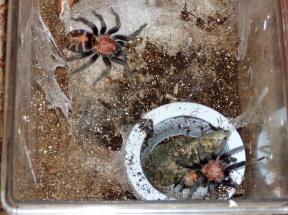
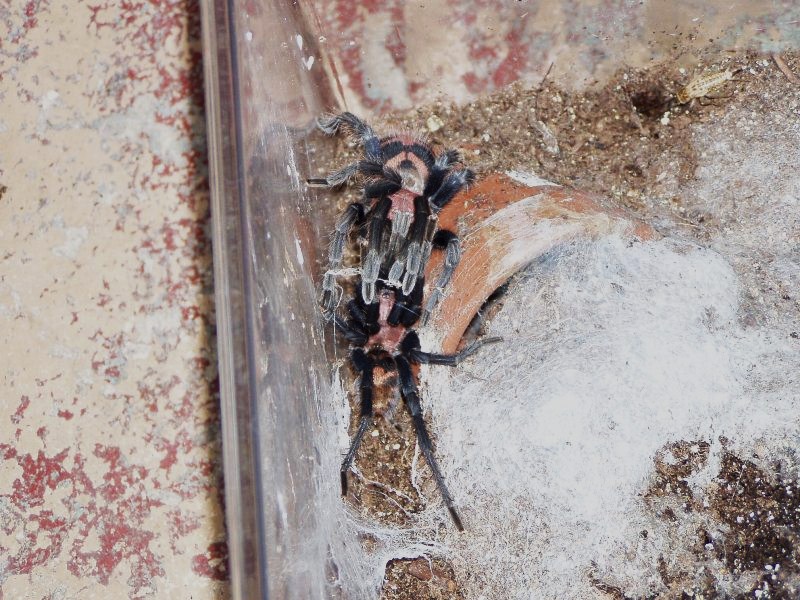
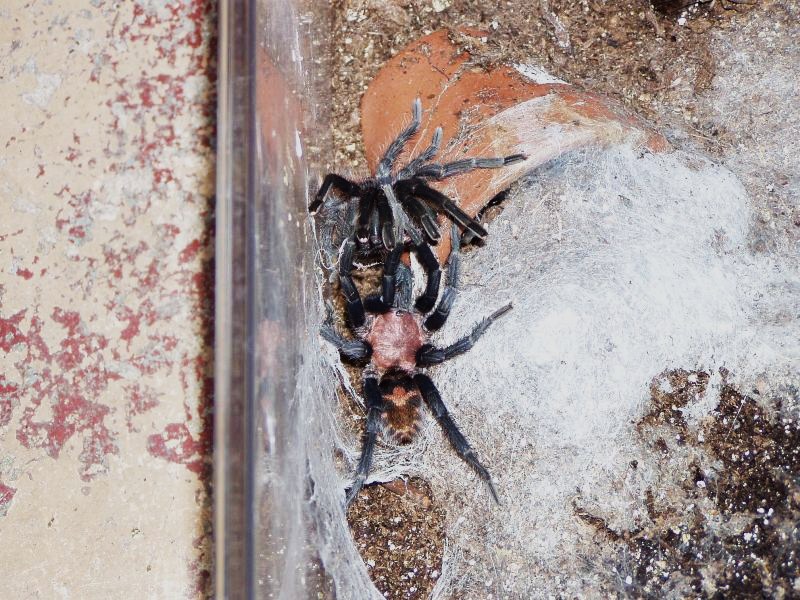
Davus pentalore
Cyriocosmus perezmilesi
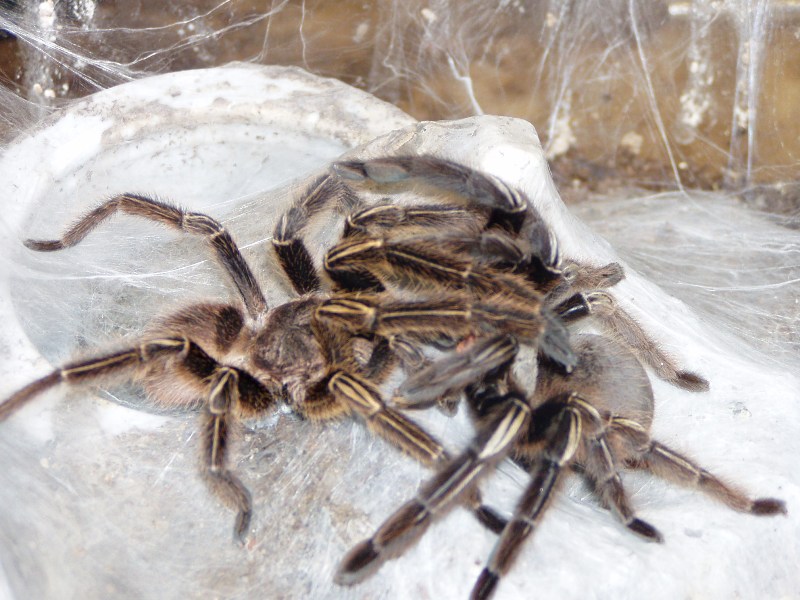
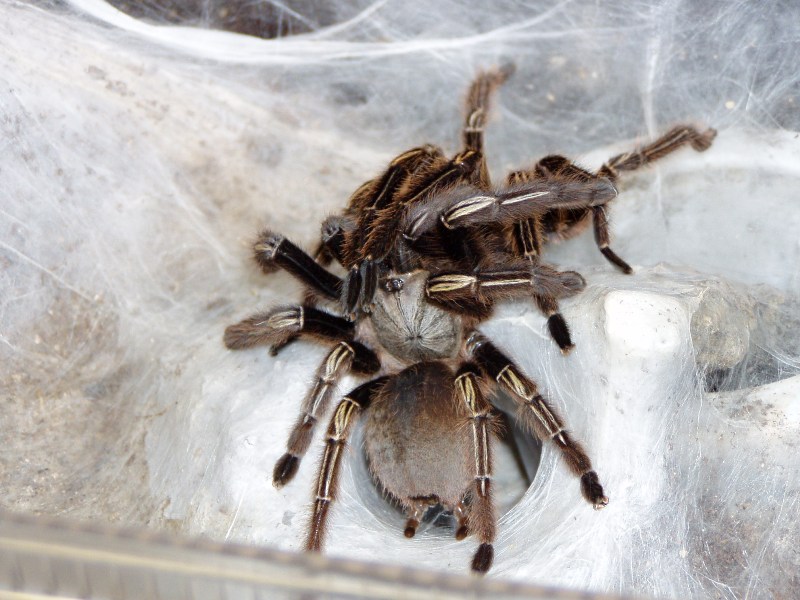
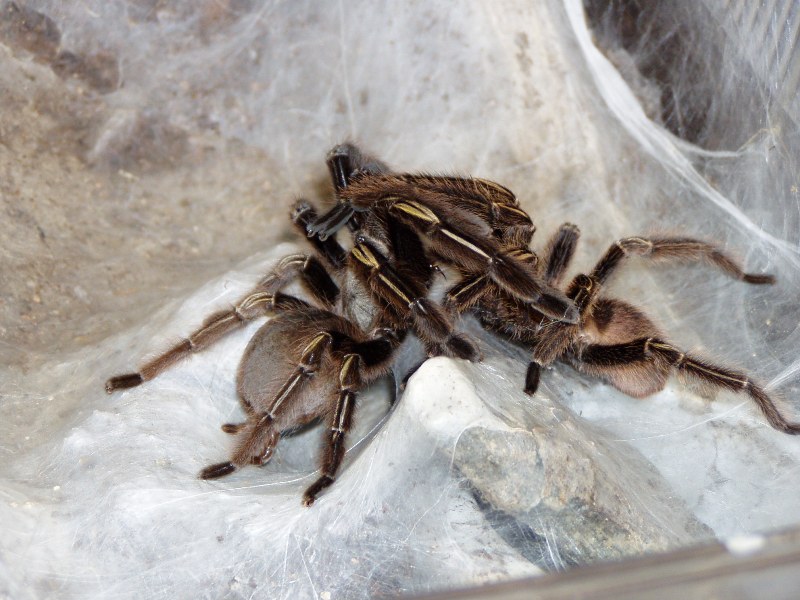
Ephebopus murinus
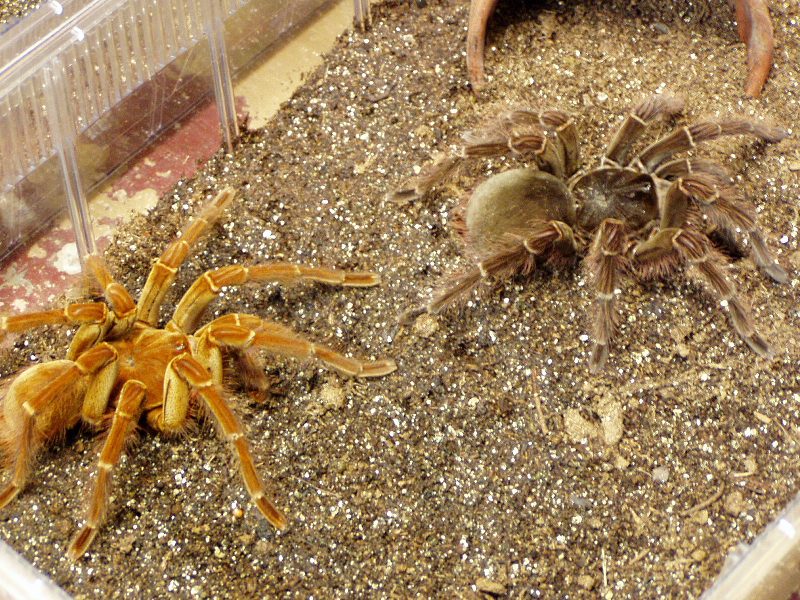
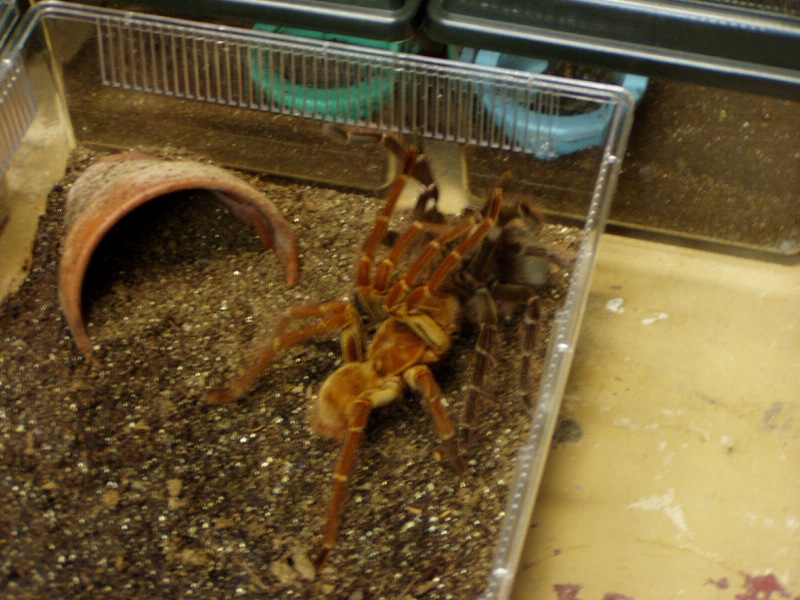
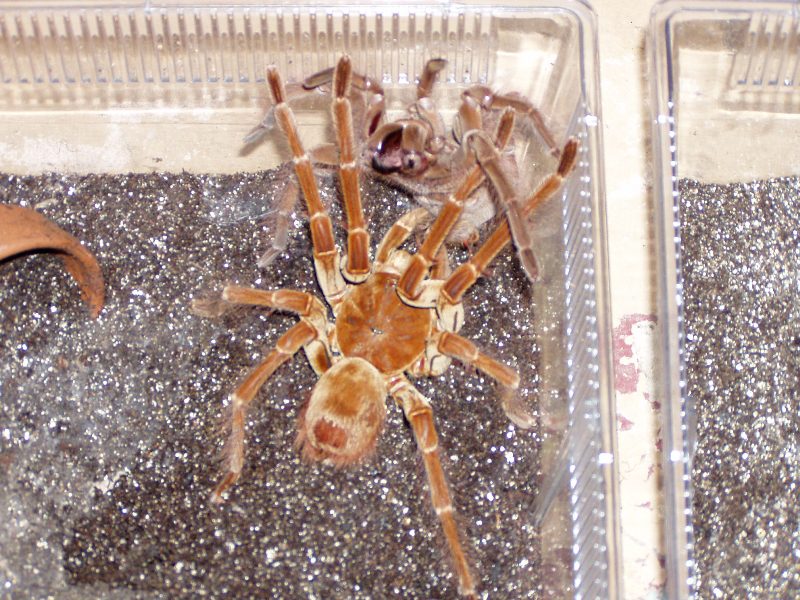
Theraphosa blondi


Brachypelma smithi
Grammostola alticeps
Phormictopus sp. (Cuban Purple)
Blue Baboon (Monocentropus balfouri)
...RESULTS
All rights reserved, ©
All photos on this website are courtesy of Mike Basic Tarantula unless stated otherwise. It's prohibited to copy without permission of author.





